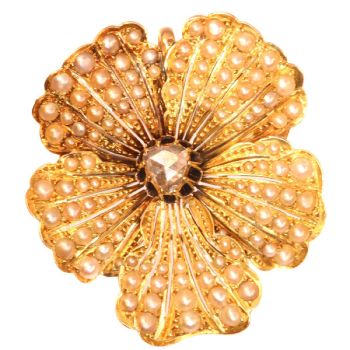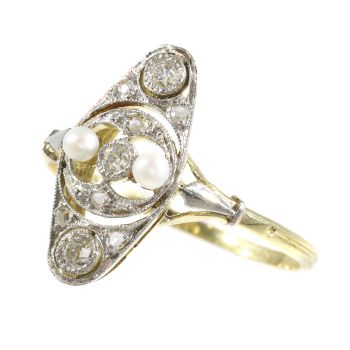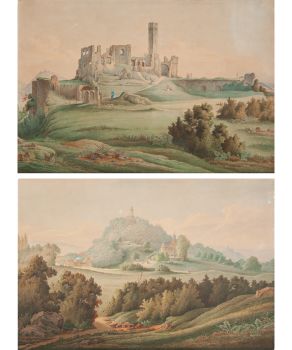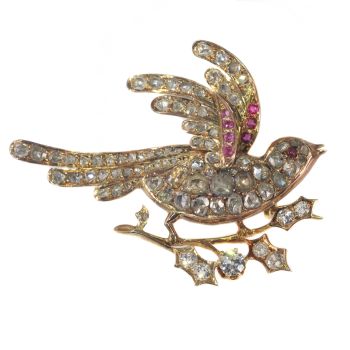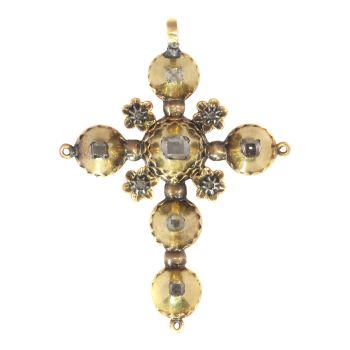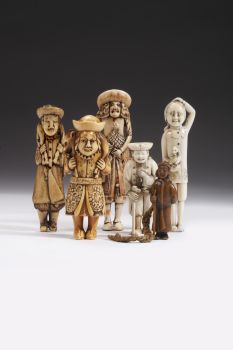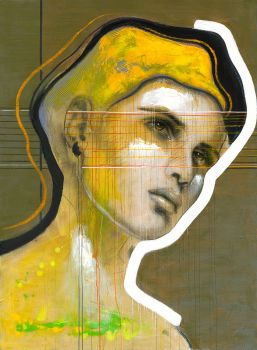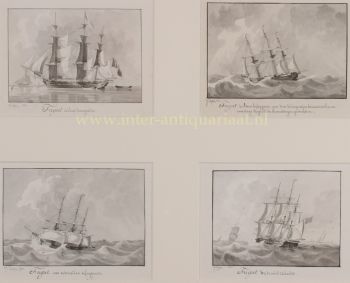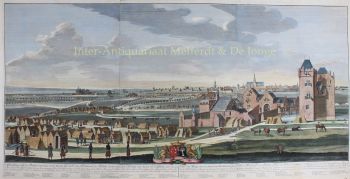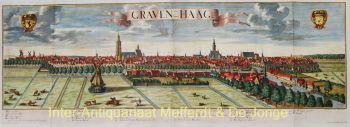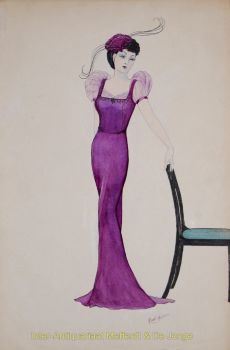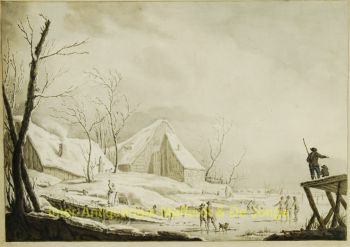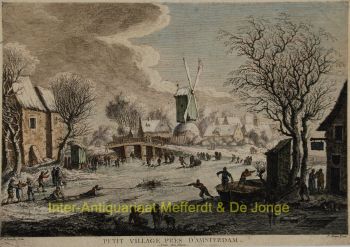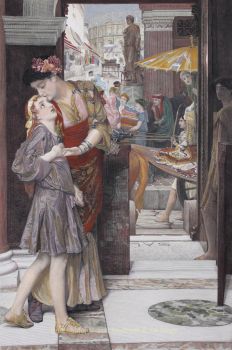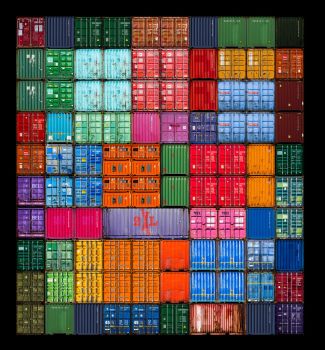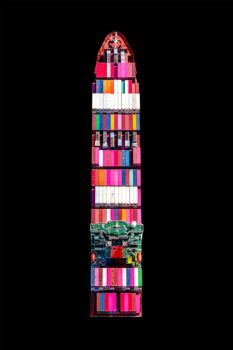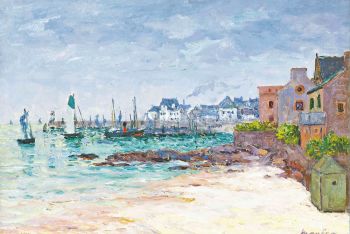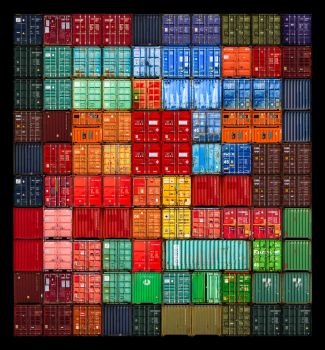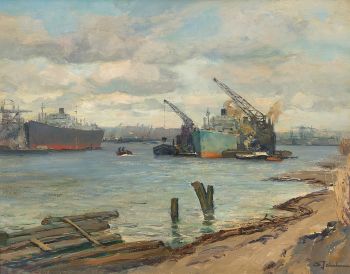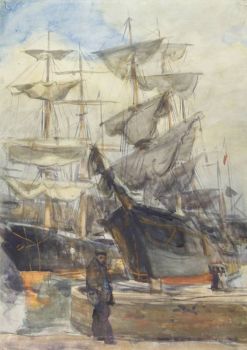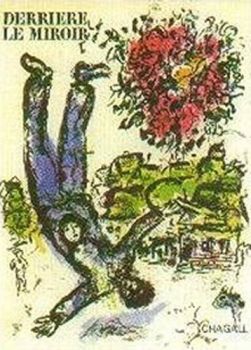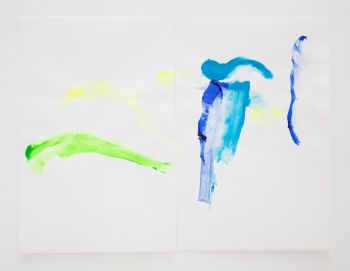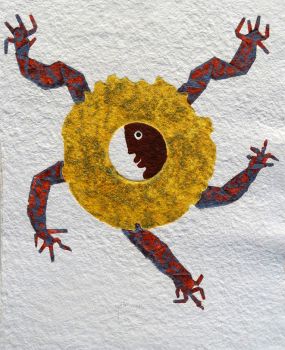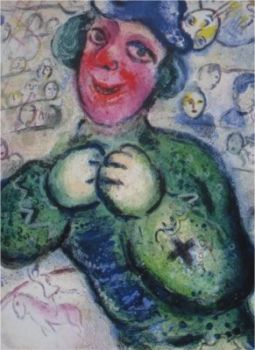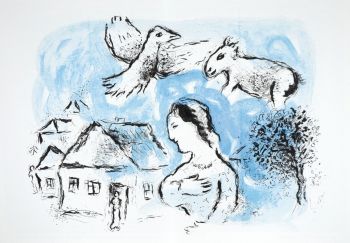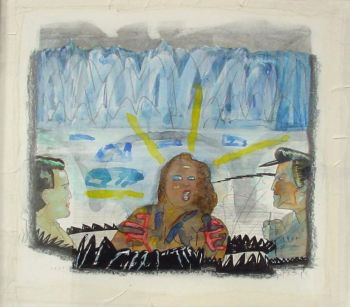Dutch merchant ship in Japan 1850
Artista Sconosciuto
CartaStampa
31 ⨯ 43 cm
Attualmente non disponibile tramite Gallerease
- A proposito di opere d'arteHollandsche Schip, Nagasaki-e (???) woodcut printed in colour during the late Edo period (ca. 1850) by an anonymous publisher. Size (paper): 31,7 x 43,2 cm. From the 1630s to the mid-1800s, Japan was virtually closed to foreigners. From 1641 onwards, the Dutch were the only Westerners allowed to stay and trade there. They had to adhere to strict regulations and were only allowed to live on Dejima, an artificial island in the port of Nagasaki. The ships themselves, with their richly decorated sterns and colourful flags, were an attraction for the Japanese. Impressive was the speed with which the sails could be rolled up and down, and the heavy cannons that enveloped the ships in clouds of smoke when a salute was fired. In 1858 the Dutch monopoly ended and the Dejima era was over. The United States, Great Britain, France, and Russia also gained trade rights with Japan. The foreigners settled in Yokohama, which quickly developed into Japan's convenient port. They had much more freedom of movement there than in Nagasaki. Women were now also allowed to stay there. An international community developed, in which the Dutch were no longer the most important. In 1695 Nishikawa Joken, the Nagasaki scholar describing the people’s of the world, wrote about “Red-Hair ships: The average length of the these ships is 25-26 ken (45,5-47,3 m), whilst the smaller ones are only about 20 ken (36,4 m). Their depth is 7 or 8 ken (12,7 or 14,6 m). They mount 22, 23, 24 or 25 guns as a rule, each measuring 8 or 9 shaku (240 or 270 cm). There are four masts (including the bowsprit), each of which is made in two pieces, being joined at a circular top. These masts can be lengthened or shortened when and if required, whilst each mast is provided with two sails (this woodcut shows three), all made of sail-cloth. Formerly ships measuring 33 ken (60m) in length sometimes came. The rudder is affixed to the stern. The anchors are all made of iron, some of them being as long as 3 or 4 ken (5,5 or 7,3m). The ropes are made of hemp, measuring 1 shaku, 2 or 3 sun (36 or 39 cm) in circumference. The black coat of the hull is coated with pitch. The red-rust coloured part of the ship below the water-line is everywhere covered with small iron nails. These ships never required repairs during their lifetime. Their ship’s gear, rope, tackle etc. are all coated with pitch; pitch is a substance composed of pine resin mixed with oil. The Dutch ship on this rare woodcut is decorated with imaginary international flags. A fanfare seems to be playing music whilst the ladder is down to let visitors on board. On deck someone uses a telescope, a Dutch invention that created awe in 17th century Japan. The writings on the upper left indicate the distance to various countries, Russia 4000 ri (3.565 km), Holland 13000 ri (3.310 km), England 10700 ri (2.724 km), Jakarta/Batavia 3400 ri (866 km), Portugal 12000 ri (3.056 km). Price: Euro 2.650,-
- A proposito di opere artista
Può succedere che un artista o un creatore sia sconosciuto.
Alcune opere non sono determinate da chi sono state realizzate o sono state realizzate da (un gruppo di) artigiani. Esempi sono statue dell'antichità, mobili, specchi o firme non chiare o leggibili ma anche alcune opere non sono affatto firmate.
Inoltre puoi trovare la seguente descrizione:
•"Attribuito a …." A loro avviso probabilmente opera dell'artista, almeno in parte
•“Studio di ….” o “Officina di” A loro avviso un'opera eseguita nello studio o nella bottega dell'artista, eventualmente sotto la sua supervisione
•“Cerchio di…” A loro avviso un'opera del periodo dell'artista che mostra la sua influenza, strettamente legata all'artista ma non necessariamente al suo allievo
•"Stile di..." o "Seguace di..." A loro avviso un'opera eseguita nello stile dell'artista ma non necessariamente da un allievo; può essere contemporaneo o quasi contemporaneo
•“Modalità di…” A loro avviso un'opera nello stile dell'artista ma di epoca successiva
•"Dopo …." A loro avviso una copia (di qualsiasi data) di un'opera dell'artista
•“Firmato…”, “Datato…” o “Iscritto” A loro avviso l'opera è stata firmata/datata/inscritta dall'artista. L'aggiunta di un punto interrogativo indica un elemento di dubbio
•"Con firma....", "Con data...", "Con iscrizione..." o “Riporta firma/data/iscrizione” a loro avviso la firma/data/iscrizione è stata aggiunta da qualcuno diverso dall'artista
Artwork details
Related artworks
Onbekende Kunstenaar
Cristallo façon de Venise Drinkglas1600 - 1650
Prijs op aanvraagPeter Korf de Gidts - Antiquairs
Onbekende Kunstenaar
Dutchmen in miniature (Netsuke)1700 - 1900
Prijs op aanvraagZebregs & Röell - Fine Art - Antiques
1 - 4 / 12- 1 - 4 / 24
Jean-François Rauzier
Poder - Limited edition of 8 2018 - 2024
Prijs op aanvraagVilla del Arte Galleries
1 - 4 / 24Marc Chagall
And Mozes saw the burdens of his Brethren1952 - 1989
Prijs op aanvraagArthouse Marc Chagall
1 - 4 / 24


